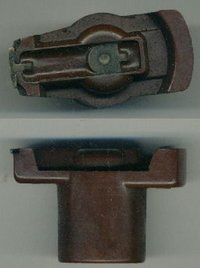Bakelite
Bakelite is a heat-resistant, thermosetting, chemically stable resin (polyoxybenzylmethylenglycolanhydride, the first plastic). It was invented about 1907-1909 by Dr. Leo Baekeland, an American chemist of Belgian descent. It is formed by combining phenol and formaldehyde under heat and pressure. Radios, telephones and electrical insulators were made of Bakelite in the past due to its insulating and heat-resistant properties.

Due to its hardness and durability when cooled, it was considered as a material for making pennies during World War II, due to copper being needed for shell casings. Several patterns were made in 1942, but steel was used instead in 1943 and recycled shell casings in 1944 and 1945.
Bakelite Limited was formed in 1927 from the amalgamation of three suppliers of phenol formaldehyde materials: the Damard Lacquer Company Limited of Birmingham; Mouldensite Limited of Darley Dale and Redmanol Limited of London. Around 1928, A new factory opened in Tyseley, Birmingham in September 1931. It was demolished in 1998.
Bakelite is little used in consumer products today due to the cost and complexity of its production and its brittle nature, but old Bakelite products, especially kitchenware and toys, have become quite collectible in recent years.
Patents
See also
External links
- Bakelite: The Material of a Thousand Uses (http://www.bakelitmuseum.de)
